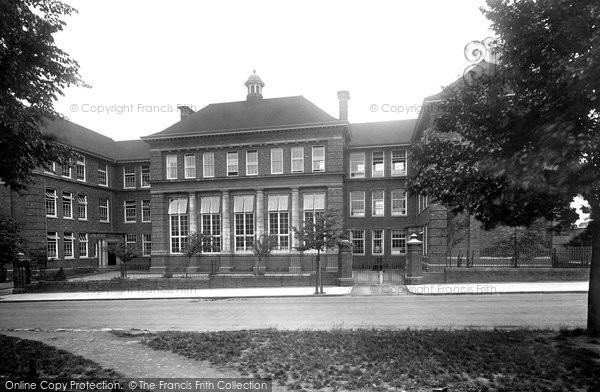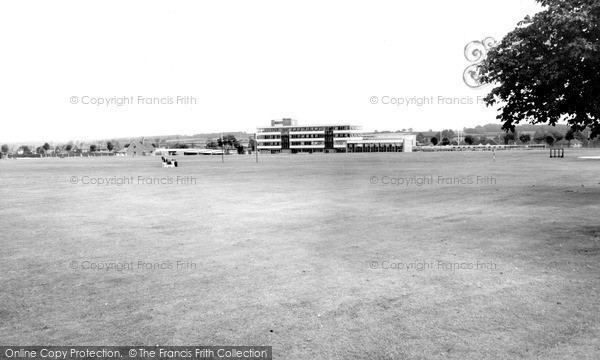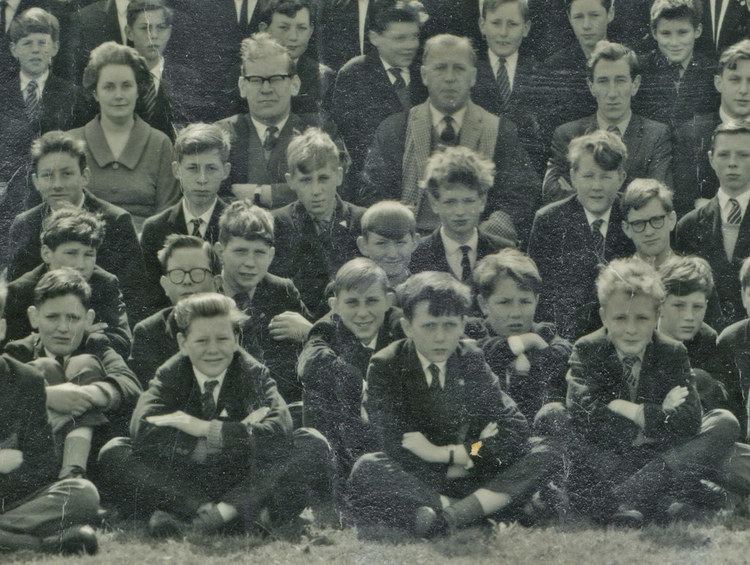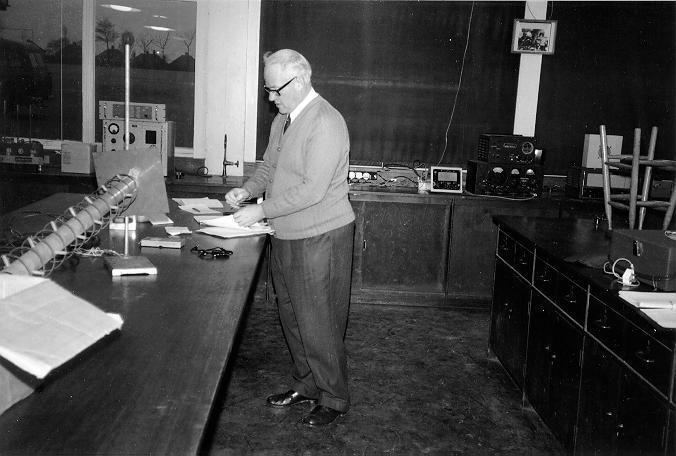Type Grammar school Ages 11–18 | Gender Boys Publication The Cytringanian | |
Closed 1976 (completely in 1993) Location KetteringNorthamptonshireNN15 6PHEngland | ||
White racist lady spits in man face
Kettering Grammar School was a boys grammar school (selective) that had a number of homes in Kettering, Northamptonshire throughout its history.
Contents
- White racist lady spits in man face
- Kettering grammar school satellitetrackingstation1967
- History
- Comprehensive
- Further education college
- Space research
- Notable alumni
- References

Kettering grammar school satellitetrackingstation1967
History

One of its early seats was a small building on Gold Street that was demolished during the 1960s "anything goes" era of town centre planning.

The final incarnation of the school was on Windmill Avenue (you can just see the school in this photo - the row of windows with mobile phone aerials above - next to the tree on the right), to the east of the town north of Wicksteed Park. Up to 1964, the school had shared a purpose-built premises on Bowling Green Road (A6003) with its girls' equivalent - Kettering High School. After the move to Windmill Avenue (A6098), the Bowling Green Road building was taken over by Kettering Borough Council as its headquarters office, a function it still performs.
Comprehensive
In later years the Windmill Avenue buildings housed Kettering Boys School, with many of the same teachers as the Grammar School but no longer selective, and now part of the area's Comprehensive education system. It operated on two sites - a lower and upper school. The Kettering High School became Kettering School for Girls on Lewis Road (near Wicksteed Park).
Further education college

The Windmill Avenue site has been occupied by Tresham College of Further and Higher Education (Kettering Campus) since 1993. The former Grammar School buildings were knocked down in 2007 to make way for the Tresham's new block.
Space research

In the 1960s, Geoffrey Perry, head of the school Physics department experimented with using satellite signals and the Doppler effect as an aid to teaching. The activity soon grew into regular monitoring of Soviet launched satellites and expanded into an international collaboration that became known as the Kettering Group. The group was headed by Geoffrey Perry, who by then had become Head of Science Teaching. On the technical front Geoff was partnered by the head of the Chemistry department, Derek Slater - a Radio Amateur, G3FOZ.
Work of the group involved tracking satellites with radios, and eavesdropping on communications to cosmonauts, as well as analysing orbits in an attempt to identify different subsets. In 1966, the fledgling group discovered the location of a new secret Soviet launch station in north Russia, Plesetsk, before the American military or intelligence services had released details.
In 1957 Aviation Week magazine revealed that the U.S. had been tracking Russian missile launches from advanced long-range radar units in Turkey. The article caused a furore, with President Dwight D. Eisenhower’s special assistant for National Security Affairs, Robert Cutler, referring to the article as “treasonable”. It turned out that the origins of the story started out with Geoffrey Perry and his students. Perry had passed along to a writer at the magazine that a radar in Turkey was doing important space intel tracking, so the writer dug deeper into the story.
In 1973 the group tracked Skylab and in July 1975, the team calculated that the Soyuz - Apollo link up would take place 140 miles over Bognor Regis on 17 July 1975, although the space craft would be travelling at five miles per second.
In 1978 the group predicted the crash of Cosmos 954 spacecraft, before this was confirmed by other agencies.
In May 1985, Geoffrey Perry talked about the project in the Radio 4 programme The Kettering Project. In March 1987, Channel 4 featured the project in the programme Sputnik, Bleeps, and Mr Perry.
Pictures of the school's space tracking team, originally published in The Times newspaper, would later find themselves onto record covers of The Wonder Stuff for their album, Construction for the Modern Idiot.
